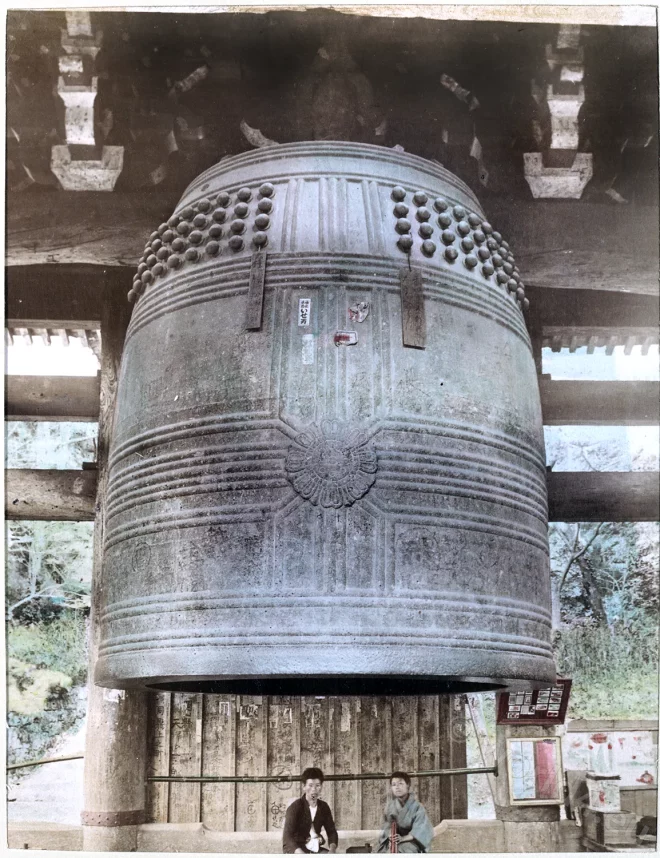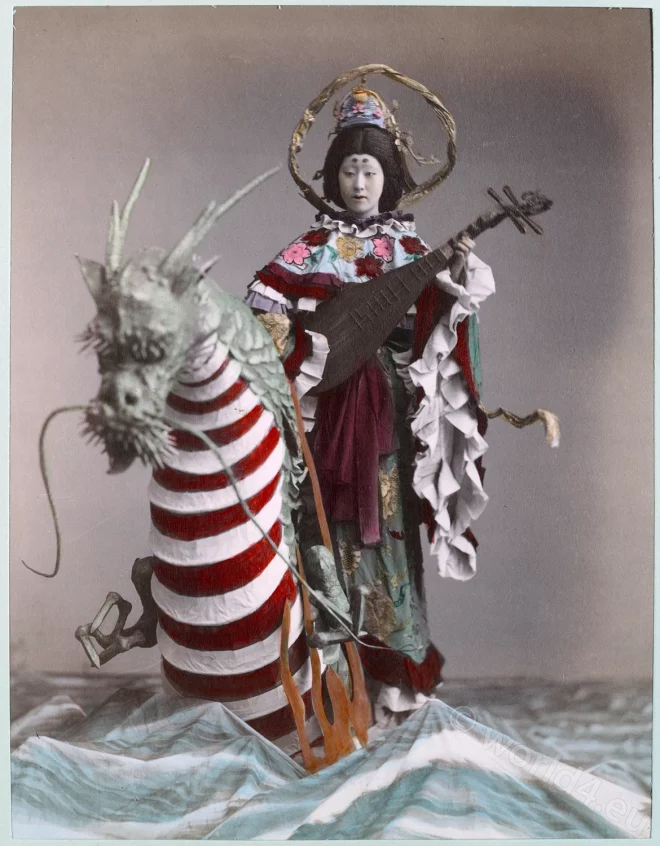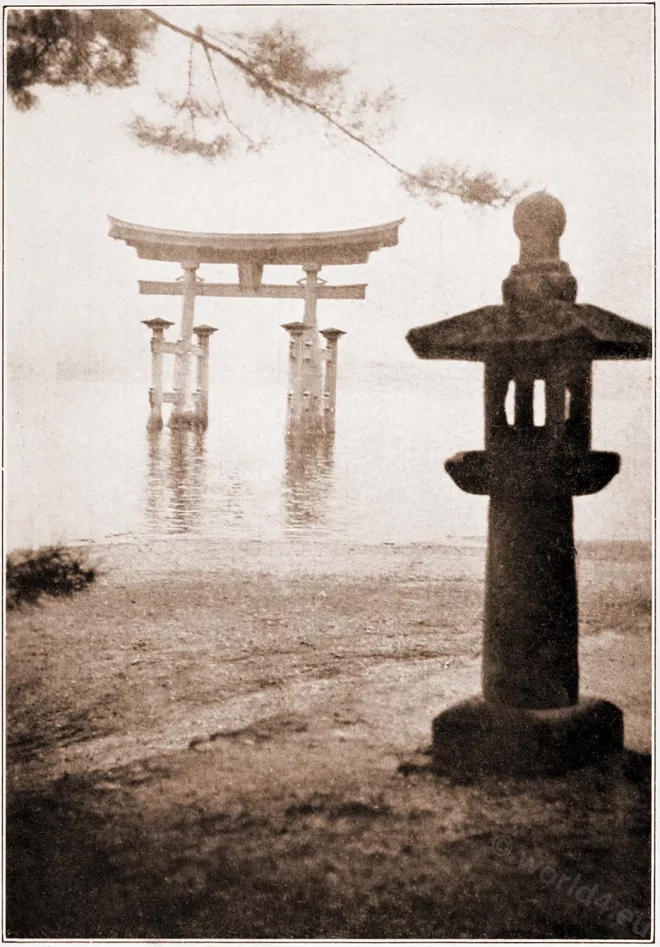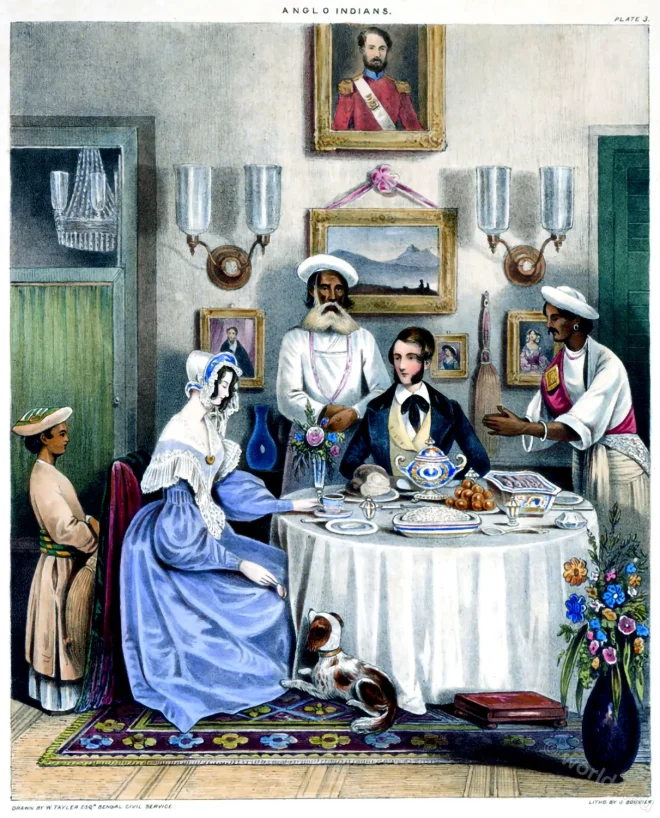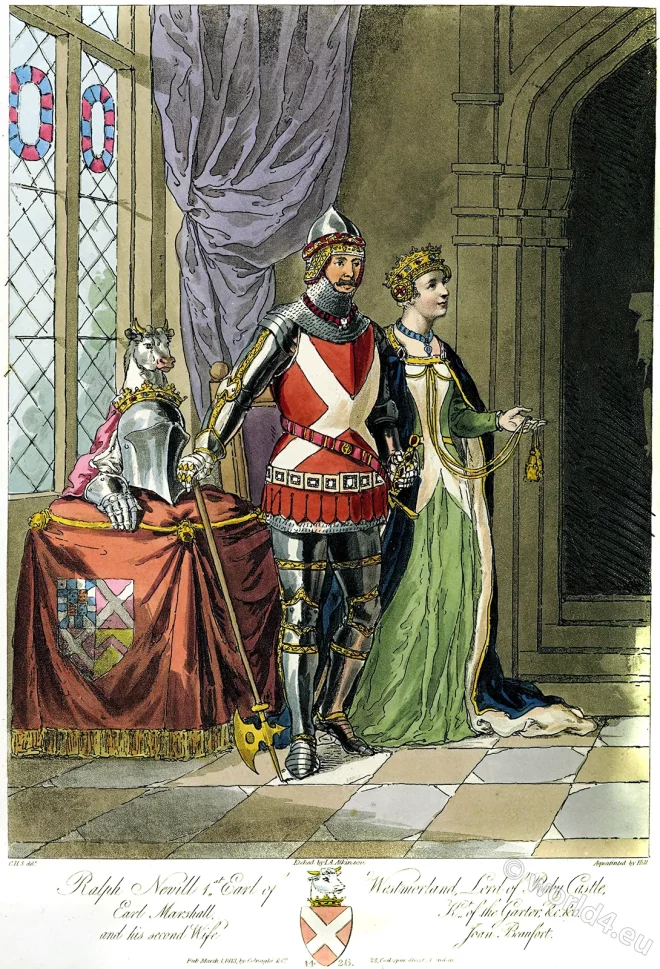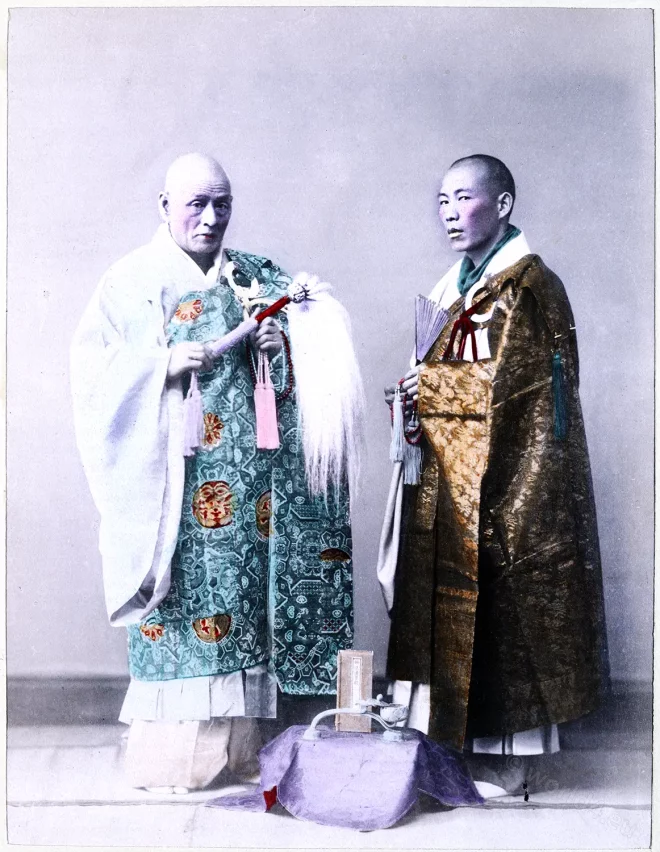Chion-in (monastery of Gratitude), in Higashiyama-ku, is the principal Buddhist monastery of the Jōdo sect.
Benten, Goddess of Matrimony, of Music, of the Sea.
Benten, or Benzaiten, is one of the Seven Divinities of Good Fortune. Patron of the family and of the sea.
Stone lanterns and their use in Japanese gardens.
Garden Lanterns may be broadly divided into two classes, namely,—the Standard class, and the Legged class
India. The morning breakfast in an English household.
India. The morning breakfast in the household of English colonial rulers.
Japanese dancers in posture and gestures.
The training of the dancing girl usually begins when she is about seven years of age.
Viewing the Irises at Horikiri, Japan.
The Acorus calamus, or Sweet Flag, which the Japanese call Hana-Shobu.
Ralph Neville first Earl of Westmorland, 15th c.
Ralph Neville first Earl of Westmorland, 15th c. and his 2nd wife Joan Beaufort.
Japan. Buddhist Priests
Buddhism. The existence of a supreme God is ignored, and life is regarded as an evil.
Ginkakuji Garden in Kyoto, Japan.
The garden of the Silver Pavilion, known as the Ginkakuji Garden, is renowned for its beauty and tranquility.
Wistaria Blossoms at Kameido, Japan.
Josiah Conder describes the beloved Wistaria as the first popular summer flower celebrated in Japanese gardens.

